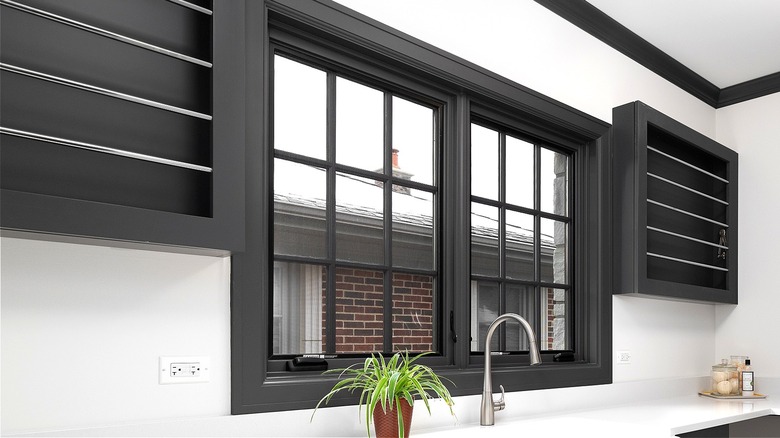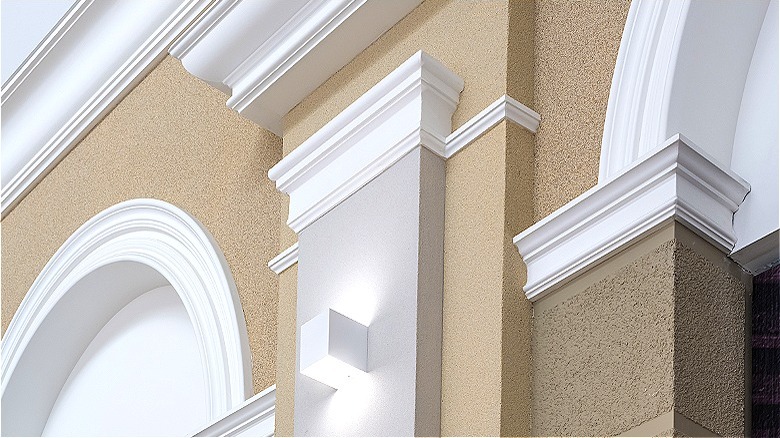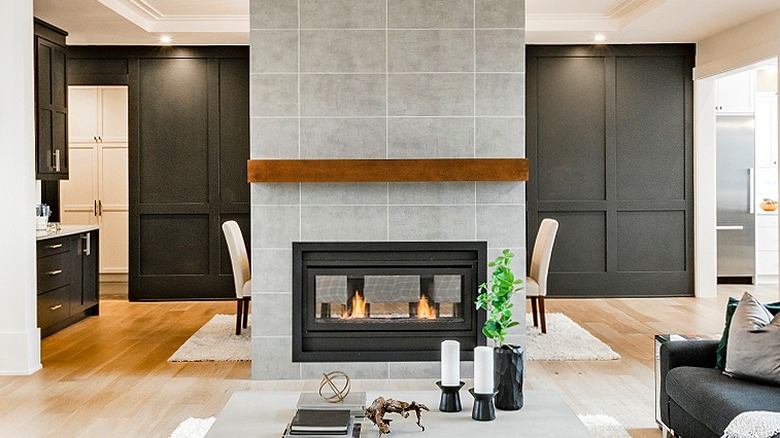How To Use Paint To Define Architectural Details Throughout Your Home
Often, the architectural differences in homes are what make them stand out. Yet, it's easy to miss those key details unless you're looking for them. Paint, however, can be one of the best ways to help define these elements, whether it's stunning detailed molding along the ceiling or a wooden framework around a window that transforms the view into a work of art.
Paint can be used to define various architectural details throughout a home, often by being an opposite or complementary color to the surrounding area. Because paint can create a visual "stop," making the brain recognize the difference from one corner to another, it's one of the most effective, and also cost-effective, methods for adding interest and depth to a space.
While the easiest way to do this is to use a stark white paint color against a brightly colored wall, there are other color choices and paint finishes you can use to create a very appealing space without a lot of extra effort. Does your home have fabulous edges and corners? Perhaps the perfectly positioned skylight or corner molding? Whatever your home's case may be, let the paint do the work to draw the eye to these stand-out details.
Paint can create dimension and visual interest
Imagine an older-style home with arches that lead from one room to the next. Those arches offer a stunning amount of architectural detail, with curved elements and molding layers upon layers. However, if the entire room, ceiling, and walls were painted white, all those intricate wood details would blend in, making them hard to even notice. You wouldn't see the soft curves of the arch or the details of the cut corners.
Instead, when you want to define an element like this in your home, consider painting it. You could go with a contrasting color. For example, you could paint the molding around a doorway a dark color, even black or blue. Alternatively, you could go with stark white paint if the walls are the opposite, a rich color like plum, forest green, or blue-gray. The white will offset that color and allow the architectural details to stand out.
This can work well in many spaces, but with crown molding, it can get tricky if the ceiling is white and the molding matches that. Use this trick, instead, in a space where the wall color is prominent, and the molding will be around doorways and windows instead of just up against a white ceiling.
Create a focal point with paint
The beautiful fireplace mantel may be your favorite component of your living room. You may have a large picture window that has the perfect view. When you want a person's eye to be drawn to a specific area or architectural detail of a room, paint an accent wall. For example, if you want a brick fireplace to stand out, paint the area above it a rich tone, one that captures the eyes to zero in on the space.
Similarly, if you want to define a picture window, make sure to use a powerful color on the wall — perhaps one that's a deep shade of green, with white window trim to help create a visually appealing piece of art that's really just the window to your backyard. You can also use tones and shadows to further define structural elements. If you have a beam, for example, that runs through the living room and creates a dramatic impact on the space's architecture, make sure to paint it a shade or two darker than the surrounding spaces. Even a bit of contrast like this can make a big statement


